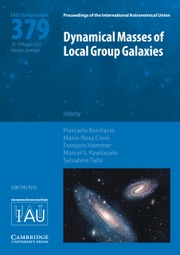No CrossRef data available.
Article contents
The Appearance of Type Ia Supernova Progenitors: If Not SSSs, then What Do They Look Like?
Published online by Cambridge University Press: 17 January 2013
Abstract
“What do the progenitors of Type Ia supernovae (SNe Ia) look like? How can we hope to find them?” We focus on the epoch during which mass is incident on a white dwarf (WD) at high rates (> 10−7M⊙ yr−1). Such epochs are expected in single-degenerate (SD) progenitors, double-degenerate (DD) progenitors, and in a wide range of binaries with WDs that will not achieve the Chandrasekhar mass, MCh. High-rate accretion onto a WD produces high luminosities through accretion alone; in addition, most calculations show that quasisteady or episodic nuclear burning can occur, increasing the luminosity by more than an order of magnitude. If the photosphere is not much larger than the WD, the emission will have values of kT in the range of tens of eV, and the source will appear as a luminous supersoft x-ray source (SSS). Studies of local SSSs that are good candidates for nuclear-burning WDs (NBWDs) suggest that many have low duty cycles of SSS activity. This is consistent with the fact that binary WD models predict about 100 times as many SSSs in external galaxies of all types as are actually detected. Interstellar absorption does not appear to be the problem. Instead, it is likely that the ~1037−1038 erg s−1 emitted by NBWDs emerges in other wavebands. The challenge we face is to search for highly luminous systems within the Milky Way and nearby galaxies that have unusual properties consistent with NBWDs, and inconsistent with other physical models. Model tests can then be conducted for individual candidates, allowing us to identify large numbers of progenitors years before explosion.
- Type
- Contributed Papers
- Information
- Proceedings of the International Astronomical Union , Volume 7 , Issue S281: Binary Paths to Type Ia Supernovae Explosions , July 2011 , pp. 132 - 135
- Copyright
- Copyright © International Astronomical Union 2013


